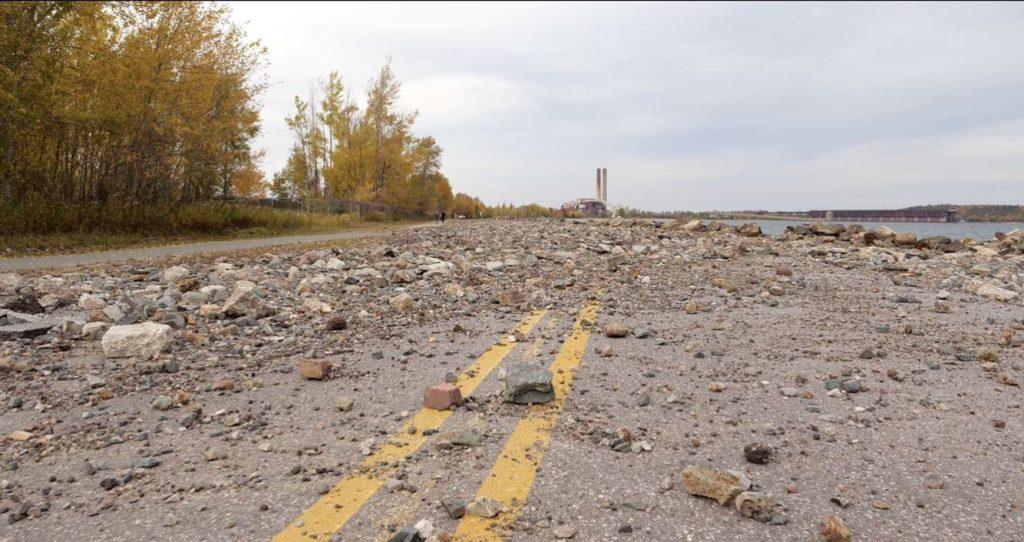Water levels in Lake Superior are at an all time high, according to Carl Lindquist, executive director of the Superior Watershed Partnership (SWP) in Marquette. Lindquist says water levels have risen more than three feet since 2013.
Despite being natural processes, rising water and erosion have the potential to damage the surrounding area. Lindquist said the Marquette County Board recently passed a disaster declaration for the Lake Superior shoreline. With it, Linquist said, the board hopes to obtain more funding for the efforts being made to limit the damaging effects of the higher water levels.
“Coastal communities are seeing serious erosion and infrastructure damage due to high lake levels and more frequent and more intense storms,” Lindquist said.
Sean Soucy is an environmental quality analyst for the Water Resources Division of the Department of Environment, Great Lakes, and Energy (EGLE). He works out of the Marquette District Office, and that there are certain processes that can be undertaken to help prevent erosion along the Lake Superior
shoreline.
One method is to construct a riprap seawall. This is a strategically placed stone barrier that protects the shoreline from the water and mitigates erosion.
“Riprap seawalls may require permits from EGLE and US Army Corps of Engineers, if fill materials are being placed on the Great Lakes bottomlands,” Soucy said. “Due to the severity of shoreline erosion statewide, EGLE has made shoreline protection permit applications a top priority, and is expediting those application reviews.”
Besides building riprap seawalls, Soucy said other actions can be taken to guard against the harmful effects of erosion.
“Moving infrastructure or structures away from shorelines is a preventative measure that allows the lake’s natural processes to occur, and moves the important infrastructure out of the zone that could be impacted by erosion/flooding damage,” Soucy said.
In the case of Lake Superior, the road in question is Lakeshore Boulevard, which Lindquist notes the SWP is involved in moving. The SWP recently received $2.5 million from the National Coastal Resiliency Grant Program. This grant was matched by $3 million from the City of Marquette. Lindquist explained that the SWP is also working with the City of Marquette and assisting them in applying for further grants. Funding will be used to move 3,500 feet of Lakeshore Boulevard approximately 300 feet inland along with other changes.
“In addition, the shoreline will be stabilized using natural restoration and green infrastructure techniques including coastal wetland restoration, dune and swale restoration and other bio-engineering practices,” Lindquist said. “The project will create over 25 acres of public green space with public trails.”
Soucy notes that moving the road will be beneficial because constant maintenance of the road will no longer be necessary, and seawalls will not need to be constructed in the area.























